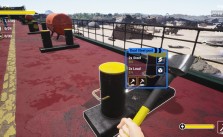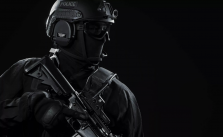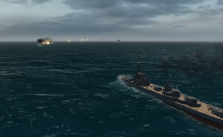Ultimate Admiral: Dreadnoughts: Ship Characteristics Guide
Ship Characteristics
Displacement
The Displacement is the ship’s weight and is expressed in tons of water that its hull displaces. The Displacement affects how many tons of machinery, armor, armament, and other important equipment can be fitted. The more tonnage, the larger and more powerful the ship at the expense of becoming a less maneuverable and bigger target. The maximum Displacement of a hull cannot be exceeded during the design process, so this is why you need to utilize the available free space carefully. Be aware that the final built may have flaws and make the ship overweight or lighter than expected.
+ Allows more armor
+ Allows more powerful armament
+ Increases ship’s structural durability during combat
– Increases ship’s cost – Requires more engine power to achieve high speeds
– Decreases maneuverability
– Makes ship a larger target
Speed
Speed measured in Knots determines how fast the ship travels on the sea and is one of the most important tactical factors in naval warfare. Fast warships can outmaneuver slower enemies or evade and withdraw when needed. Slow warships will not be able to keep a safe distance from torpedo-equipped enemies, and it will be impossible to chase weaker targets to destroy them.
+ Increases maneuverability
+ Helps in evading combat and stronger enemies
+ Helps in chasing weaker enemies
+ Makes the ship harder to target
– Engine’s machinery increases ship’s cost
– Decreases available tonnage
Range
The Operational range measures how far the ship can travel away from friendly ports without refueling and is determined by the ship’s fuel storage. As technology develops, the engines’ fuel consumption becomes more efficient, allowing longer journeys in a shorter time, so less ship tonnage is needed for fuel tanks and provisions. The minimum operational range limits the ship to coastal defense and standard naval duties while the higher range gives the capability to participate in distant naval raids, surprise strikes, and special missions, making it a much more useful and multi-purpose warship.
+ Increases operational usefulness
+ Increases probability of convoy raids
+ Increases probability of favorable naval missions
+ Decreases maintenance penalty in distant travels
– Fuel storage and consumption increases ship’s cost
– Decreases available tonnage
Bulkheads
Bulkheads are reinforced walls that divide the hull’s interior in multiple rooms. The amount of bulkheads directly affects the ship’s survivability. When the hull is subdivided into many sections, flooding or fire damage is more easily controlled, while the ship’s citadel is far more protected against shells that penetrate the hull. The citadel encloses the machinery and magazine spaces; thus, engine damage and ammo detonation become less likely when bulkheads’ division is dense and well-armored.
+ Improves overall flooding protection
+ Improves overall fire protection in sections below the waterline
+ Reduces probability of engine damage from penetrating shells
+ Reduces probability of ammo detonation from penetrating shells
– Increases ship’s cost
– Decreases available tonnage












